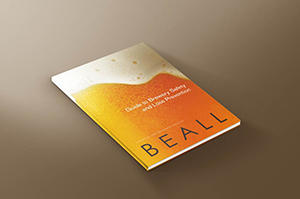The craft beer landscape is undergoing a fascinating evolution. While hop-forward IPAs and rich stouts still hold their esteemed places, a new category is rapidly gaining traction and reshaping tap lists: non-alcoholic beer and low-alcohol beer. This surge isn’t a fleeting trend; it’s a significant market shift driven by evolving consumer lifestyles, particularly a growing emphasis on health consciousness and the influential sober curious movement. For craft breweries, understanding and catering to this demand presents a substantial opportunity to expand their customer base and boost revenue.
The numbers speak for themselves. The global non-alcoholic beer market has seen robust growth, projected to grow from $21.94 billion in 2024 to an impressive $23.98 billion in 2025, with forecasts expecting it to reach $35.35 billion by 2029 (Research and Markets). This isn’t just about removing alcohol; it’s about offering sophisticated, flavorful alternatives that align with modern wellness goals. The sober curious movement, where individuals mindfully moderate or abstain from alcohol for personal well-being, plays a pivotal role. It’s less about strict sobriety and more about choice, with consumers actively seeking high-quality, enjoyable options that fit a balanced lifestyle. Data indicates that a significant percentage of adults, particularly younger demographics like Gen Z, are drinking less alcohol and are open to, or actively consuming, non-alcoholic alternatives.
So, who is the target consumer for these innovative brews? It’s a diverse group:
- Health-Conscious Individuals: Those prioritizing fitness, lower calorie intake, or simply reducing alcohol’s impact on their physical and mental well-being.
- Mindful Moderators (The Sober Curious): Drinkers who enjoy the taste and social aspect of beer but want to cut back on alcohol consumption without sacrificing the craft experience. This group might opt for a low-alcohol beer during the week or alternate between alcoholic and non-alcoholic options during a social outing.
- Designated Drivers & Inclusive Socializers: Individuals who want to be part of the social occasion but are abstaining from alcohol for practical or personal reasons.
- Former Craft Beer Lovers: Those who have stopped drinking alcohol but miss the complexity and camaraderie of the craft beer scene.
- The Explorers: Consumers eager to try new things, especially when they align with quality and craft credentials.
Successfully tapping into the non-alcoholic craft beer and low-alcohol beer market requires more than just producing these beverages; it demands thoughtful marketing strategies. Here’s how breweries can connect:
- Flavor First, Function Second: Emphasize the craft. Highlight the quality ingredients, brewing expertise, and complex flavor profiles. Marketing should position these beers as desirable in their own right, not just as “lesser-than” alternatives. Talk about the hop varietals, the malt character, and the brewing process, just as you would for your alcoholic offerings.
- Inclusive Taproom Experience: Integrate NA and low-alcohol options seamlessly into your menu. Offer them on tap, give them equal prominence, and ensure staff are knowledgeable and enthusiastic. Consider NA beer flights or food pairing suggestions.
- Targeted Digital Marketing: Utilize social media and online advertising to reach health and wellness communities, sober curious groups, and fitness enthusiasts. Share content that highlights the lifestyle benefits without being preachy – focus on refreshment, flavor, and inclusivity.
- Occasion-Based Marketing: Position these beers for specific moments. A crisp low-alcohol beer could be the perfect lunchtime pint, a post-workout refresher, or a satisfying choice for a weeknight gathering.
- Transparency and Education: Clearly label ABV. Educate consumers about the brewing process and how flavor is maintained or created in your non-alcoholic craft beer. This builds trust and appeals to the discerning craft drinker.
- Partnerships and Sampling: Collaborate with wellness events, fitness studios, or restaurants focused on healthy lifestyles. In-store sampling (where legal and appropriate) can also convert curious consumers.
The rise of low and no-alcohol options isn’t a threat to traditional craft beer; it’s an expansion. By embracing innovation in brewing and thoughtful marketing, craft breweries can cater to a broader audience, meet evolving consumer needs, and find exciting new avenues for growth in this dynamic and rapidly expanding segment.
For more than 30 years, Beall Financial and Insurance Services, Inc., has been helping corporations and individuals protect their most important assets. The agency’s client base covers a spectrum of niche businesses, such as craft breweries, that require specialized insurance packages and knowledge. With offices in California and Indiana, Beall Financial and Insurance Services serves clients nationwide.

